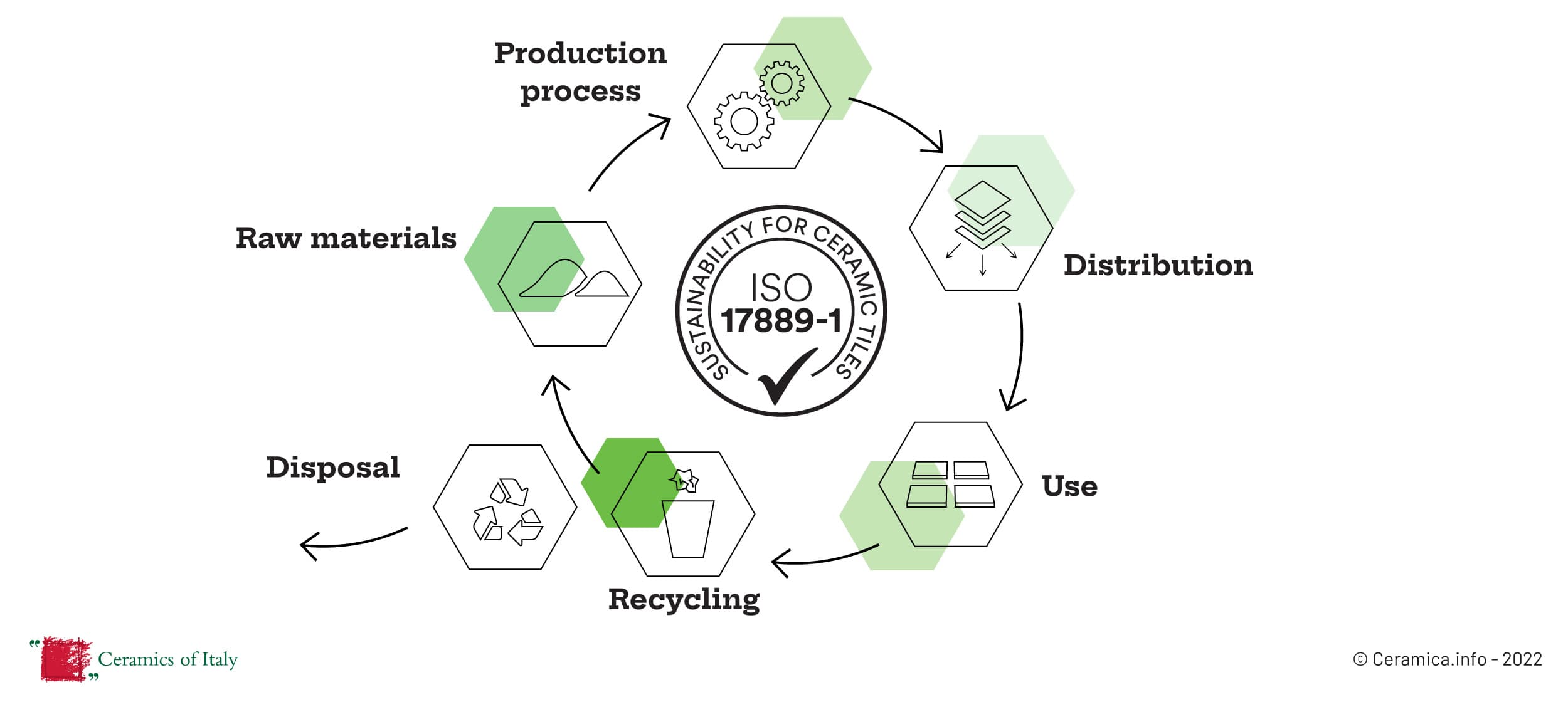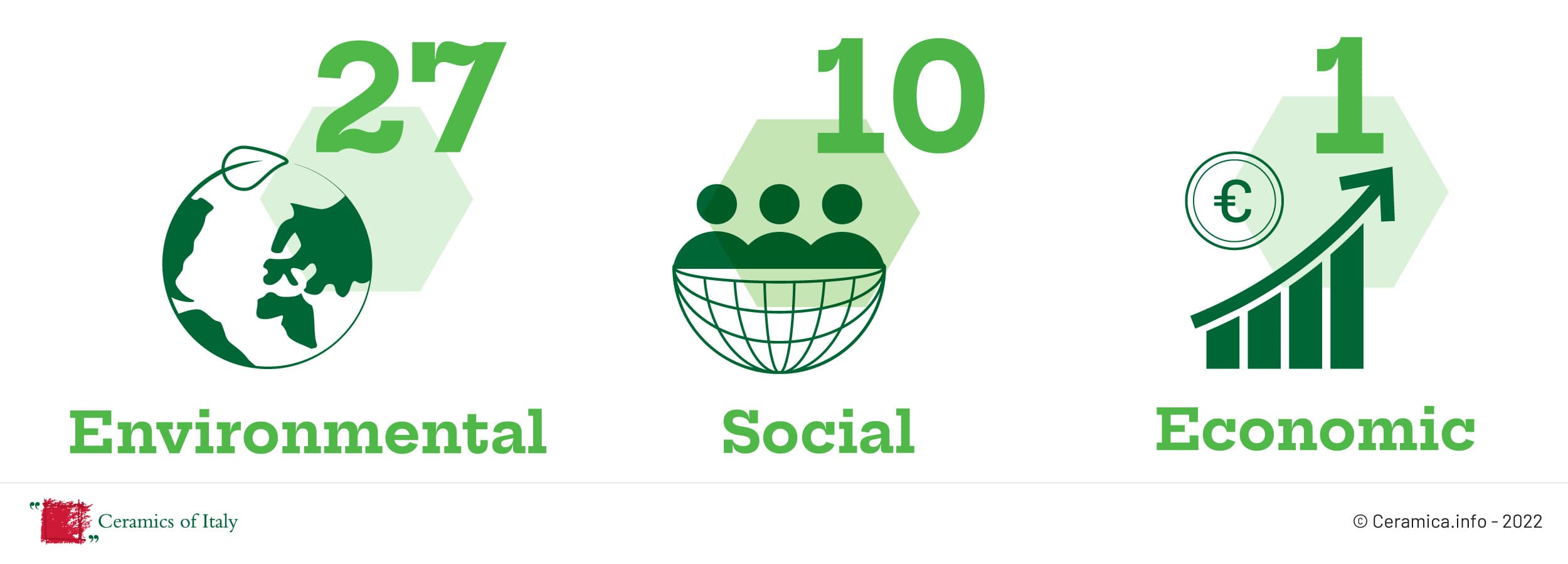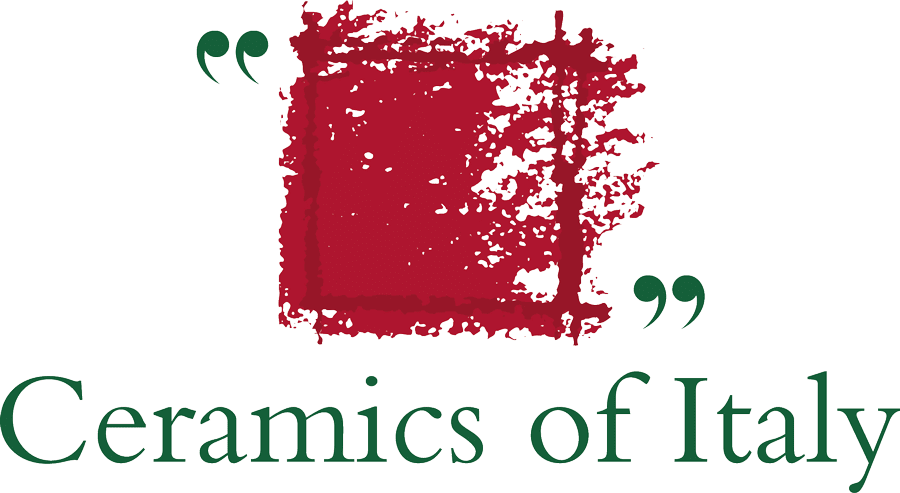The first international standard for sustainability
The standard ISO 17889-1 “Ceramic tiling systems – Sustainability for ceramic tiles and installation materials – Part 1: Specifications and vocabulary for ceramic tiles” defines for the first time a set of international parameters for objectively measuring the environmental, economic and social impact of ceramic tiles throughout their life cycle.

Measuring the sustainability of ceramic tiles
The evaluation system consists of 38 mandatory and voluntary requirements and a multi-rating score structure.
- 15 mandatory requirements determine the minimum pre-requisites that a tile must possess in order to be defined as sustainable. If a product does not meet all these criteria, it is not eligible for certification.
- 23 voluntary requirements determine a score from 100 to 130 according to different levels of product and process performance.
For a tile to comply with ISO 17889-1, it must meet all the mandatory requirements and gain 117.5 points from the voluntary requirements. The average Italian product exceeds this threshold with an average score of 124 and peaks of 126.

How compliance with the standard is certified
ISO 17889-1 enables ceramic tile producers to certify the sustainability of their products in a similar way to other ISO certifications. They can do this in two different ways:
- The company can self-declare that its products meet the minimum value required by the standard and indicate its score.
- External or accredited certification bodies can certify the conformity of the product to the standard and its score based on information obtained from laboratory tests, inspections, audits, etc.
The benefits of ISO 17889-1
The global building and construction materials market adopts numerous environmental product labels and building rating systems, with application criteria that differ from one country to another. The international standard ISO 17889-1 simplifies the situation by standardising the evaluation and rating criteria.

This provides ceramic tile producers around the world with a method for evaluating their environmental performance throughout the production chain and the good practices they have adopted at a company level. It also gives architects, contractors and end customers a verifiable and objective tool to avoid greenwashing traps and identify truly sustainable tiles.
A contribution to the UN 2030 Agenda
The ISO 17889-1 standard also promotes the careful use of natural resources and the reduction of waste, as well as ensuring greater transparency on the part of companies regarding the sustainability of their production processes. This means it is aligned with Sustainable Development Goal 12 of the UN’s 2030 Agenda regarding responsible consumption and production.



 Architects
Architects
 Construction firms
Construction firms
 Dealers
Dealers
 Installers
Installers
 Public
Public


